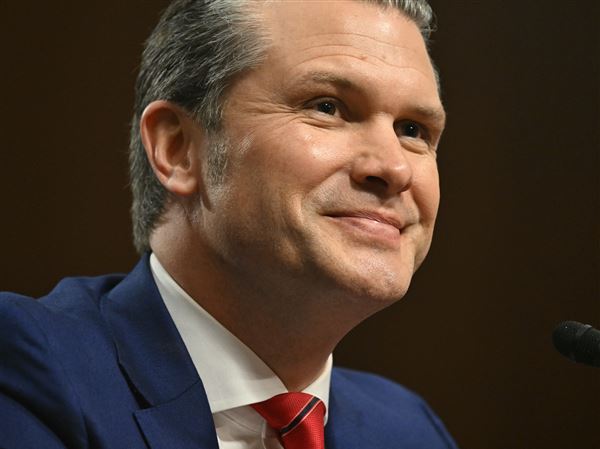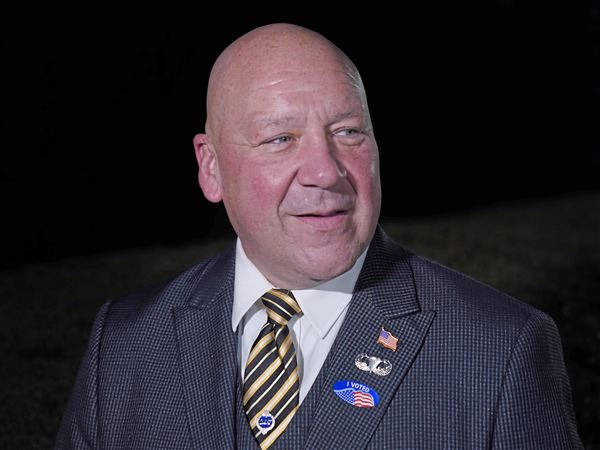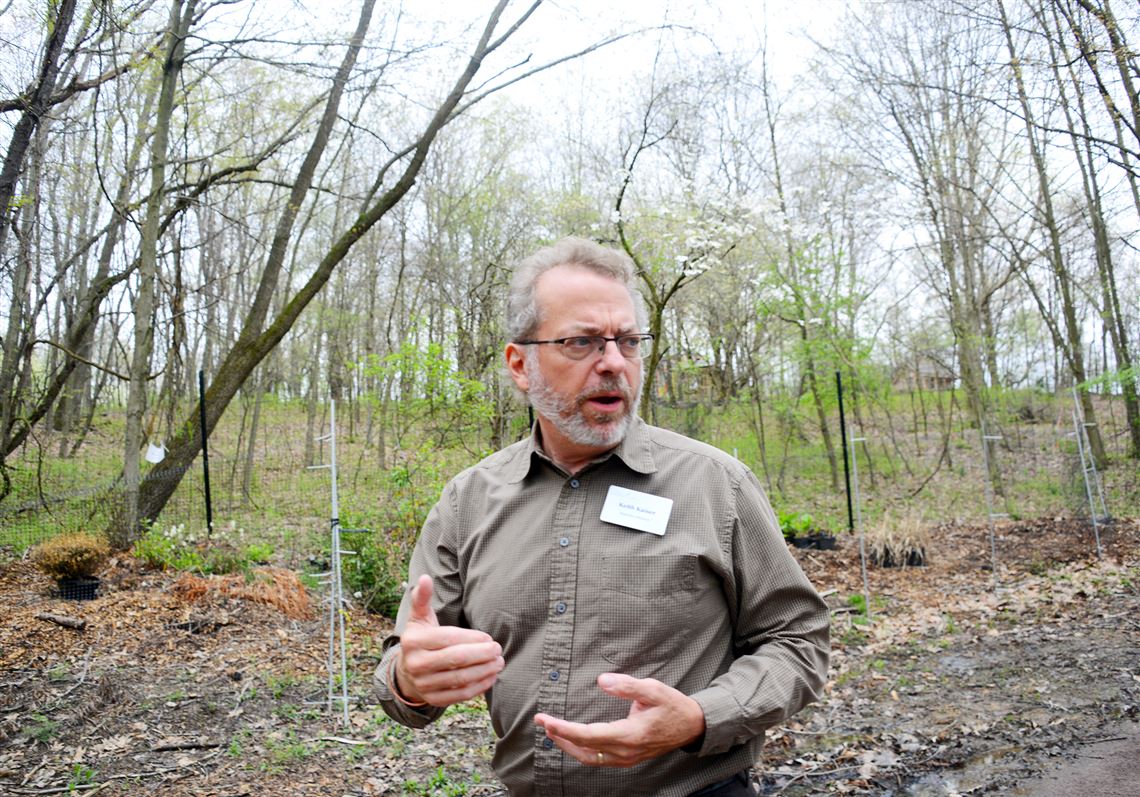On a recent morning at the Pittsburgh Botanic Garden, visiting schoolchildren noisily played around the edge of a pristine pond, searching for minnows and sunfish and scouring aesthetically arranged boulders.
Just five years ago, this spot in the hills west of Pittsburgh — now christened the Asian Woodland landscape — was no place for children. What garden officials had thought was unusually clear water was actually polluted with high concentrations of aluminum from a nearby coal mine abandoned decades ago.
Now, with an underground treatment system removing the acidity from the water, the pond is an attraction for the still-developing garden’s 25,000 annual visitors. It is also evidence, the garden’s creators hope, that money spent on reclamation projects reaps economic rewards.
“Here they’ve turned a liability into an asset, and that’s the goal,” said Robert Hedin, president of Mt. Lebanon-based Hedin Environmental, which installed the treatment system.
“You can spend on things that have a priority because there’s economic development,” he added. “This place has been the talking point for the last five years about making that money available.”
In the four decades since the nation started to clean up polluted mine lands, federal and state funds have focused on simply restoring damaged land to its original condition and eliminating public health hazards.
But a new $30 million pot of money is seeding 14 pilot projects in Pennsylvania that, while they may require less remediation than other sites, also have the potential to build something that has value. Projects include a waterline construction that cleans up acid mine drainage while extending water to a community and construction of a geothermal pool that draws energy from the earth’s natural heat.
The botanic garden, with a budget of about $1.5 million, is the only recipient of its kind on the state’s list. It’s receiving $716,000 to tackle projects through the end of next year.
The state Department of Environmental Protection also awarded funds to the Allegheny County Airport Authority to reclaim 54 acres of abandoned mine land as part of its World Trade Center Business Park development. Airport planners have envisioned more than 1 million square feet of office space, research and development facilities and a hotel with convention space on a bluff overlooking Pittsburgh International Airport.
The botanic gardens is just one example in the Pittsburgh area where industry has left ruin but is less defined than a simple brownfield site, said Keith Kaiser, executive director of the botanic gardens. The brownfield term is used to describe a former industrial or commercial site that has some environmental contamination, like where a steel mill or factory once stood.
“Pittsburgh has a lot of old industry that would not be a traditional brownfield kind of site, but it’s very much the same concept,” Mr. Kaiser said. “We are creating a new cultural institution here on land that had a former use. We are happy we can be a very great example of that.”
Though first conceived nearly three decades ago, the Pittsburgh Botanic Garden is fairly new. The group was founded in 1988 by people who wanted an outdoor collection of gardens to complement Phipps Conservatory and Botanical Gardens in Oakland, the 19th century Victorian greenhouse that features mostly indoor garden exhibits.
About 10 years later, the group secured a lease from the county within Settlers Cabin Park that grew to 460 acres spread across Collier and North Fayette. After another 15 years or so of clearing and development, the garden opened 60 acres of gardens and trails to the public in April 2015. Admission is $9 for adults, $6 for ages 3 to 18, and free for children under 3.
The garden’s welcome center is housed in a restored barn along Pinkerton Run Road that was built roughly 150 years ago. Administrative offices are in a former log house across the street. Behind the barn is a “celebration center” that can accommodate outdoor or indoor weddings and corporate events.
The master plan calls for 18 distinct gardens and five “diverse woodland experiences.”
But the garden’s aesthetics — hilltop meadows and deep valleys carved by springs — are beset with a damaging legacy.
The gardens rest on a large swath of abandoned mine land — a term for sites dug up long before a 1977 federal law required mining companies to restore land back to its original condition. That means no one is responsible for fixing it and, often, the mining companies are long gone.
The 1977 law created a federal fund from coal taxes to pay for abandoned mine reclamation. Managed by the Office of Surface Mining Reclamation and Enforcement, the fund doled out $60 million in 2016 to clean up sites across Pennsylvania, with most of the money poured into restoring dangerous sites that threaten public health.
As garden officials began to inventory its acreage, they asked Mr. Hedin for his assessment. He found features that may have looked like natural issues were vestiges of rogue mining.
Those 20-foot ridges in the middle of the forest? Steep cliffs left behind by surface miners in the 1940s who used bulldozers and excavators to scrape coal off the ground. Those holes in the ground, those larger round pits? Subsidence as underground mines that were likely dug in the 1910s collapse.
And that immaculate spring water? Severely polluted acid mine drainage that damaged the surrounding ecology.
One of the first priorities was to route the drainage through an underground tank — measuring 100 feet long, 20 feet wide, 5 feet deep — filled with limestone rock aggregate that removes aluminum.
In a matter of weeks, the water was clean. The garden built a walking path of zigzagged wooden planks on top of the tank and stocked the pond with trout, bass, minnows and sunfish.
For the pond cleanup, the botanic garden received funding through the Growing Greener fund — $250,000 from the state DEP and another $100,000 from the federal Office of Surface Mining.
But last year, Congress authorized coal mining states to pull from a new pot of money set aside for mine cleanup with a focus on community development. In July, the DEP announced the 14 sites across the state would receive $30 million.
“By targeting projects that have an economic development aspect, more funding can be leveraged and more projects completed without additional state dollars,” said Patrick McDonnell, DEP acting secretary. “That’s government that works.”
The Pittsburgh Botanic Garden was awarded $716,000 — money that will reclaim land to begin expanding to make more gardens available to the public. This summer, crews will smooth out the cliffs left behind by strip mines and fill in the subsidence pits, garden officials said.
“Generally, there are sites more dangerous than this,” Mr. Hedin said. “But now you throw a botanic garden on top of it … now it becomes a bigger concern.”
“This is a neat place, all the reclamation people want to be part of the botanic garden,” Mr. Hedin said. “There’s lots to clean up but lots of good resources.”
Daniel Moore: dmoore@post-gazette.com, 412-263-2743 and Twitter @PGdanielmoore.
First Published: May 1, 2017, 4:00 a.m.

















